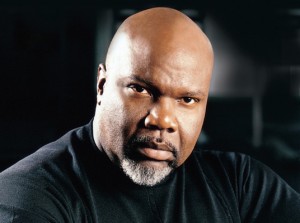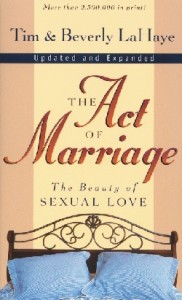 Over at Religion in American History, Ed Blum blogs about how the label of “evangelical” presumes whiteness, particularly the 2005 list by Time magazine of prominent evangelicals. The list includes T.D. Jakes and Luis Cortes. Sans these two ministers “representing” African-American and Latino evangelicalisms (and we all know that evangelicalism is a varied constellation rather than unified movement), the list is overwhelming white. I would also add that the list is overwhelming male, with four women featured. Out of the four women, two are listed independently ( Joyce Meyer and Diane Knippers) while Beverly LaHaye and Roberta Ahmanson appear alongside their husbands. While it is should already be apparent, I will say it anyway: All of these women are also white.
Over at Religion in American History, Ed Blum blogs about how the label of “evangelical” presumes whiteness, particularly the 2005 list by Time magazine of prominent evangelicals. The list includes T.D. Jakes and Luis Cortes. Sans these two ministers “representing” African-American and Latino evangelicalisms (and we all know that evangelicalism is a varied constellation rather than unified movement), the list is overwhelming white. I would also add that the list is overwhelming male, with four women featured. Out of the four women, two are listed independently ( Joyce Meyer and Diane Knippers) while Beverly LaHaye and Roberta Ahmanson appear alongside their husbands. While it is should already be apparent, I will say it anyway: All of these women are also white.
 Blum’s critique, however, is not simply a take-down of Time’s (dated) compilation of important “evangelicals,” but rather he is responding to John Turner’s post reflecting on how this kind of list might appear differently in 2012. In all fairness, Turner notes the utter lack of Asian Americans on the list, the inclusion of only one evangelical Latino minister and the presence of few women.
Blum’s critique, however, is not simply a take-down of Time’s (dated) compilation of important “evangelicals,” but rather he is responding to John Turner’s post reflecting on how this kind of list might appear differently in 2012. In all fairness, Turner notes the utter lack of Asian Americans on the list, the inclusion of only one evangelical Latino minister and the presence of few women.
Using Turner’s post as a starting point, Ed argues that we should all really pay attention to lack of attention to whiteness in the labeling of evangelical. This inattention appears not only Time‘s list but also in the the field of evangelical studies more largely. His apparent frustration emerges in how evangelical often functions as code for white evangelical. Thus, other people who happen to evangelical and who are not white get racial modifiers attached to their evangelicalism., which is what happens with both Jakes and Cortes. This seems to imply that if these categories are somehow monolithic. FYI, they are’t.
This post mirrors my own frustrated reaction application of evangelical, as if the term was devoid of racial and gendered classifications. Presumed, or even assumed, whiteness and maleness obscures rather than illuminates the racial diversity of evangelicalism past and present. When will studies of evangelicalism and American religious history take whiteness and maleness into account in a serious manner? (This round table on whiteness in Religion and American Culture is a helpful start.)
To even pose this question leads me to sigh very big sighs while banging my head against the desk. Here’s a short form version of how I feel about the need to study whiteness:
Why don’t we problematize, or heck, even engage, the bodies attached to these ideologies? I think it deeply matters that white male bodies are ignored in favor of their ideas and their rhetoric. They become soley progenitors of words, somehow absent from the fleshy reality that plagues the rest of us (even though there is attention, not analysis, of physical appearances). Embodiment matters, and I want to know why there is still hesitance to press bodily analysis on certain, dominant religious groups. Griffith does lead the way on this, and I think Martha Finch’s work gets us closer to this kind of analysis. Why aren’t we analyzing white Christian bodies? Is it an assumption of invisibility and dominance? Or is there something more subtle and possibly insidious going on here? (Read more here.)
Here is what Ed writes:
My complaint is … with the entire field of “evangelical” studies. Until it can come up with a definition of itself that explains why books about it are almost uniformly about white people (because last I checked, lots and lots and lots of African Americans have fit Bebbington’s definition), then it needs greater definitional precision. So many American historians bristle at “whiteness” studies, but this is a clear case, to me, where whiteness is hidden in plain site. This is the kind of assumption that leads books about religion and the founders to exclude Phillis Wheatley, to focus on Charles Finney but rarely William Apess, to pine for Lincoln to be evangelical but to ignore Frederick Douglass, and to lionize Dwight Moody and leave out Ida B. Wells. (Emphasis is mine.)
The rest of the post is here, and make sure to check out the comments on Ed’s post too. What are we to make of this avoidance of whiteness? How we make the assumed into the analyzable? What is to be gained if we recognize the racialized and gendered presumptions of a term like evangelical?
Pingback: Before It's News
Pingback: The Invention of American Evangelicalism; or, Why Ed Blum is Mad | theinventing.info
I think much of this ‘whiteness’ issue surrounding the historical writing and teaching about evangelicalism has theological roots. If white theologians set the definitions for most of the discussion around American religious history as a whole. Is such a group more Calvinistic or Armenian? Is this or that revival more Wesleyan or Keswickian? Most instructors don’t even discuss Black religion or theology until the fight over slavery during the Civil War Era and by that time the foundations for evangelical have already been ordained as white. I love theology and intellectual history but too often it is used to deny former slaves, immigrants and women a place at the white male table. It is my primary problem with the theology of the white Parhem being used to define and label the black origins of Pentecostalism as originating as a white holiness movement. I know all these issues are complicated but historians need to do a better job showing the racism and sexism of the past and present and not just point to some past theology of some white dead man that they think can explain every detail of US religious history.
Robert, yes, I agree about the ways in which theology and intellectual history can exacerbate whiteness and maleness at the expense of other peoples and other stories by tracking the history of elites rather than exploring how terms like evangelical function, or don’t, in religious lives of Americans. This might sound ironic coming from a scholar of the Klan, mostly white men and some white women, but I spend a lot of time thinking about how the Klan constructed not only whiteness but racial difference (and masculinity too) rather than assuming we understand whiteness commonly. Just because it is assumed or normative does not give historians a pass at talking about these very important issues.
Maybe it’s from my Lutheran upbringing, in which hanivg Evangelical’ in the name of the church simply seemed to imply that our lives themselves testified to the grace of God or maybe that’s the rational I have looking back on it. With it being more traditional or high church’ each Sunday we professed one of the creeds and even though I didn’t understand it at the time, the impression I carry with me now from that is looking at them as a chorus that unites us. Here might be my push back Mason. We are all aware of the division continues each day amongst the church, damning one another all under the guise of being Biblical’ and proclaiming Truth. But maybe we should proclaim the creeds more and in turn remember we are one we disagree on matters that don’t really matter but we agree on the thing that does. The creeds could be, or better can be, that subtle build that draws us in during a Explosions in the Sky song, not taking away anything, instead adding to the layer upon layer of depth of the rest of the song (the Narrative) carries and in the end has us moved by some thing greater than the song.
About the bristling at whiteness studies–… I honestly think a lot of people don’t “get” what we mean when we talk about the power of whiteness and the critical study of whiteness. In my experience, people think in terms of racists / not racists (an unhelpful binary in my opinion), and therefore miss the fact that white skin connotes the privilege of simple visibility. Great conversation!!
Yes, I think that binary of racist/not-racist does mean that folks get nervous at the mention of whiteness without examining the sheer privilege (and authority) granted to white men. Even in the study of racism and white supremacist movements, I wish there was more engagement with whiteness as a critical term that needs to be defined and examined because white supremacists work very hard to craft visible whiteness and race pride, which they imagine other white people ignore at their peril. Whiteness, unsurprisingly, shifts we include racism as a part of the equation.
My comment is beeatld , to say the least , but I am a Canadian who has lived on both sides of the 49th . There may be differences between evangelicalism in the US and Canada , but not when it comes to the subject of homosexual persons . The rhetoric is just as consistently vitriolic The actions and speech of evangelicals during the same-sex marriage debates spoke volumes about their entrenched mindset . SSM was never really the issue , to begin with.Overriding it all was and is ; the intense opposition to our’ very existence. When faith based groups concentrate on denigrating and marginalizing an entire segment of humanity ; the consequences are tragic. I have binders full of documented incidents that exist as proof of such reality.
Pingback: The Invention of American Evangelicalism; or, Why Ed Blum is Mad « Michael J. Altman